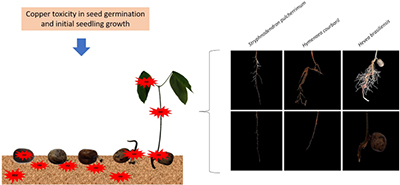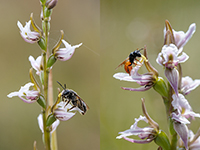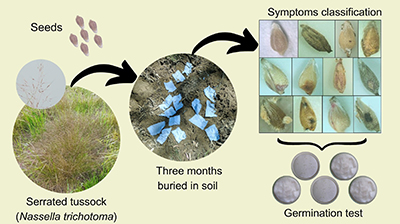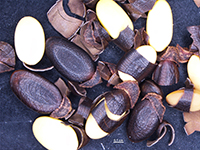We studied shoot and foliage production in 15 Cerrado tree species with distinct leaf phenology, to investigate the influence of monthly air temperature and rainfall over a growing season. Each growth strategy kept shoot and foliage production independent of monthly climate variability, emphasising the significance of characterising the leaf phenological assemblages of the vast Cerrado woody flora as inherent functional groups in a continuum of crown trait variation, enabling the identification of strategies to capture, use, and store resources in each tree group. Image by Maria Gracielle Rodrigues Maciel.
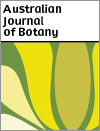
Australian Journal of Botany
Volume 72 Number 5 2024
Industrial and agricultural activities increase heavy metal concentrations in the environment, contaminating soil and plants. Seeds and seedlings of Hymenaea courbaril, Stryphnodendron pulcherrimum, and Hevea brasiliensis (Amazonian tree species) subjected to copper (500 mg kg−1) were characterised by detrimental effects on germination, with negative implications for the initial seedling growth. Differential tolerance to copper was observed among species. Our findings provided insights into the resilience of tree species when facing copper-induced stress, shedding light on promising candidates for phytoremediation endeavours. Image by the authors.
Information on past fire regimes can provide useful insights into species disturbance adaptations. To test the idea that contemporary demographic parameters provide a signature of past fire regimes, we assessed fire-related plant life-history strategies by using static demographic data collected along a 1–35-year fire-age chronosequence for species with a variety of traits. Species displayed a collection of life-history strategies associated with a historical mixed-severity fire regime, including adaptations for short and long fire intervals, interacting with varying fire severity. Photograph by Russell Miller.
BT23098 Abstract | BT23098 Full Text | BT23098PDF (2.9 MB) | BT23098Supplementary Material (727 KB) Open Access Article
For the Critically Endangered Prasophyllum innubum, pollination occurs via three species of bee and a sphecid wasp, suggesting a generalised strategy that may offer flexibility when selecting sites for conservation translocation. Fruit set averaged 72–84%, despite a minimal contribution from self-pollination. Only 4% of inflorescences were consumed by herbivores, meaning that if herbivores are a threat for this species, it is likely to be through alteration of habitat rather than direct grazing. Photograph by Tobias Hayashi.
BT23110 Abstract | BT23110 Full Text | BT23110PDF (654 KB) | BT23110Supplementary Material (737 KB) Open Access Article
Serrated tussock is widely distributed in central Argentina and is one of the most damaging invasive species in Australia. We characterised the fungi able to colonise its seeds buried at a site in south-western Buenos Aires province, Argentina, and measured their impact on seed survival and germination during two contrasting seasons. Image by Alejandro Loydi.
Moisture content (MC) is an important property of seeds, associated with many aspects of physiological seed quality. Acacias have very hard seed coats, which means that seeds can survive for decades in the soil, but in standard methods of determining MC (e.g. heating in an oven at 103°C for 17 h), the moisture in the seed might not be able to escape. The standard method can work for some Acacia species; however, to ensure accurate results, seeds should be halved before going into the oven. Image by Geoff Burrows.
BT24021 Abstract | BT24021 Full Text | BT24021PDF (1.9 MB) Open Access Article




